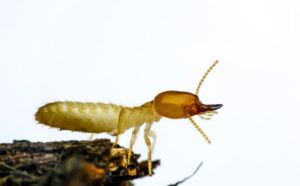Termites; those pesky little insects that live in your wooden furniture and thrive in damp, dark environments. Almost seems like we can’t live in hot and humid Singapore and have beautiful wood furniture and fixtures without having the fear of a termite infestation erupting in our home.
Not to worry, in this article below, we will reveal how you can spot the signs of termites in your home and eradicate them before the situation gets out of hand.
Stuck Windows or Doors
Is there a window or door in your home that has begun to feel stuck, or is more difficult than usual to open and close? If this is the case, it’s possible you may have an underlying termite infestation. Termites are typically drawn towards areas of exposed wood such as windows and door frames which they can easily access. As these pests begin consuming the wooden structure, it often warps causing difficulty when trying to operate the doors/windows properly.
In addition to jammed windows and doors, you may encounter other structural issues such as cracked baseboards or slanted floors/ceilings if you have a termite infestation. Pay special attention to any destroyed wood with tunnels filled with dirt since those are sure signs that it’s been infested with termites. Keep in mind though – there could be a simple explanation for some problems like moisture buildup or simply ageing architecture so make sure you do your due diligence before taking action.
Damage under Paint or Wallpaper
As termites bore through cardboard or wood panelling underneath the surface of your wall, they construct tunnels known as “termite galleries,” and leave small pinholes referred to as “exit holes” in their wake.
Although the termite damage may not be visible to the naked eye, sometimes it can leave a small hint of destruction on coats of paint and wallpaper. Because this subtlety makes them hard to detect, people generally find evidence of these pesky critters when they are doing home repairs or renovations. This is why it’s critical for homeowners to get regular inspections done if they suspect their house has been infested by termites.
If you look carefully, you may be able to detect telltale signs of termites on painted or wallpapered surfaces. Such evidence can also serve as an early warning of their presence and could include things like:
- Surfaces that are sunken in or concaved
- Thin, sunken in winding lines
- Wallpaper that is peeling or discoloured
- Buckling wood
- Small pinholes on the surface
- Paint that looks like it has bubbled
Termite Swarmers & Discarded Wings
A huge indicator of a present termite infestation is seeing swarming termites inside your home or office building.
Organized like a monarchy, termites have three distinct categories of individuals—workers, soldiers and swarmers (often referred to as alates). The latter are the reproductive members responsible for continuing the colony.
Distinguishable by two pairs of large, pale wings measuring up to 1/2 inches long, swarmers will abandon their wings and fly away from the colony after mating.
As swarmers are naturally drawn to light, you’ll often find them near doors and windows. Another clear sign of their presence is discarded wings near your entryways and windowsills.
It is easy to mistake swarmers with flying ants, but these two insects have distinct differences. A key difference lies in their wings: termite swarmers feature straight bodies with straighter wings of equal length, whereas ant swarmers have pinched waists paired with unevenly-sized wings.
Mud Tubes
Next, inspect your home for mud tubes. They resemble thin streaks on exterior walls and can be traced from the ground level up to sections with exposed wood. Termites build these tunnels out of dirt so they’re shielded against dryness in their environment.
Subterranean termites possess fragile exoskeletons, so they require a moist environment to live in. By constructing mud tubes, these resilient creatures can safely travel from their nest to their food sources.
If you spot mud tubes, you can quickly confirm whether or not your house has an active termite infestation by breaking off a piece of the tube and inspecting it for any live activity. Even if there are no indications during this initial check, go back later to see if the tunnel has been repaired. This will be proof that your home currently has termites.
Even if you don’t find any living termites or the mud tunnel is not repaired, it doesn’t necessarily mean that your home and property are safe. The termites may have relocated to another area of your house with easier access to their food source. Stay vigilant – it’s always better to be proactive when dealing with pests!
Termite Droppings
Look out for “frass” (termite droppings) – this is a telltale sign of termites. They consume wood and, as such, secrete waste to avoid unnecessary buildup around the colony.
If your environment is prone to drywood termites, you will notice wood-coloured debris appearing as small pellets akin to wood dust or shavings. Drywood termite frass is noticeable by the human eye.
In comparison, subterranean termites use their droppings to build their mud tunnels, as such their frass will not be visible.
Now you know how to spot the signs of termites in your home. Make sure to stay vigilant, especially on wooden surfaces in your home, and request for a termite specialist to inspect your home if you suspect that an infestation has occurred.



